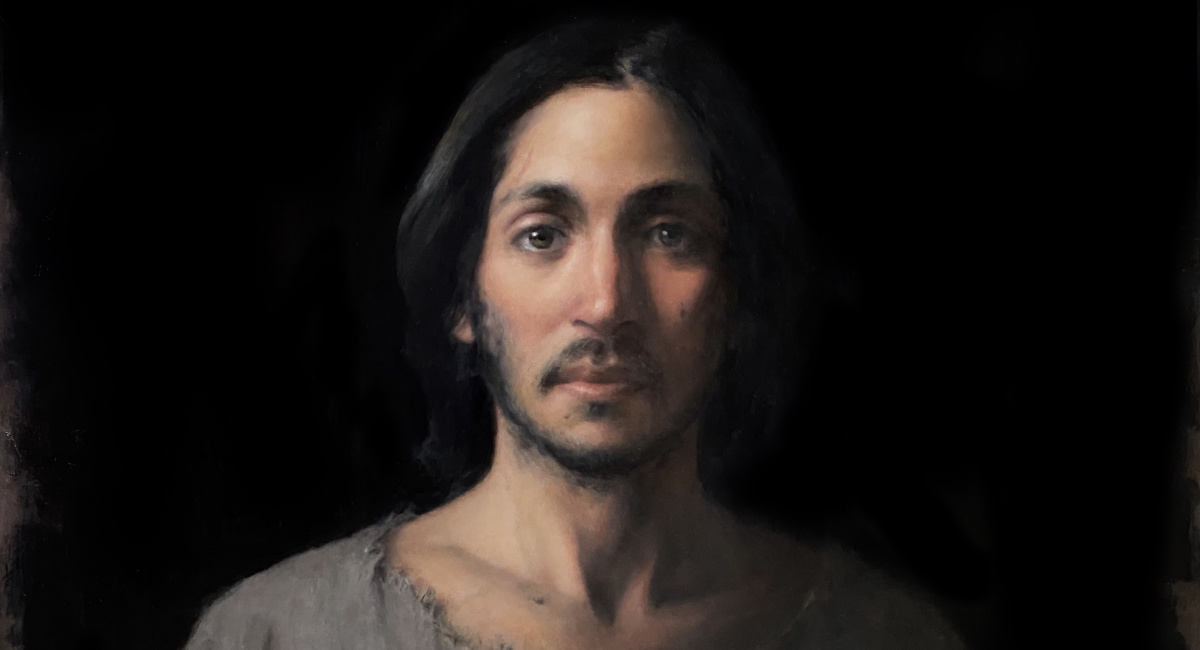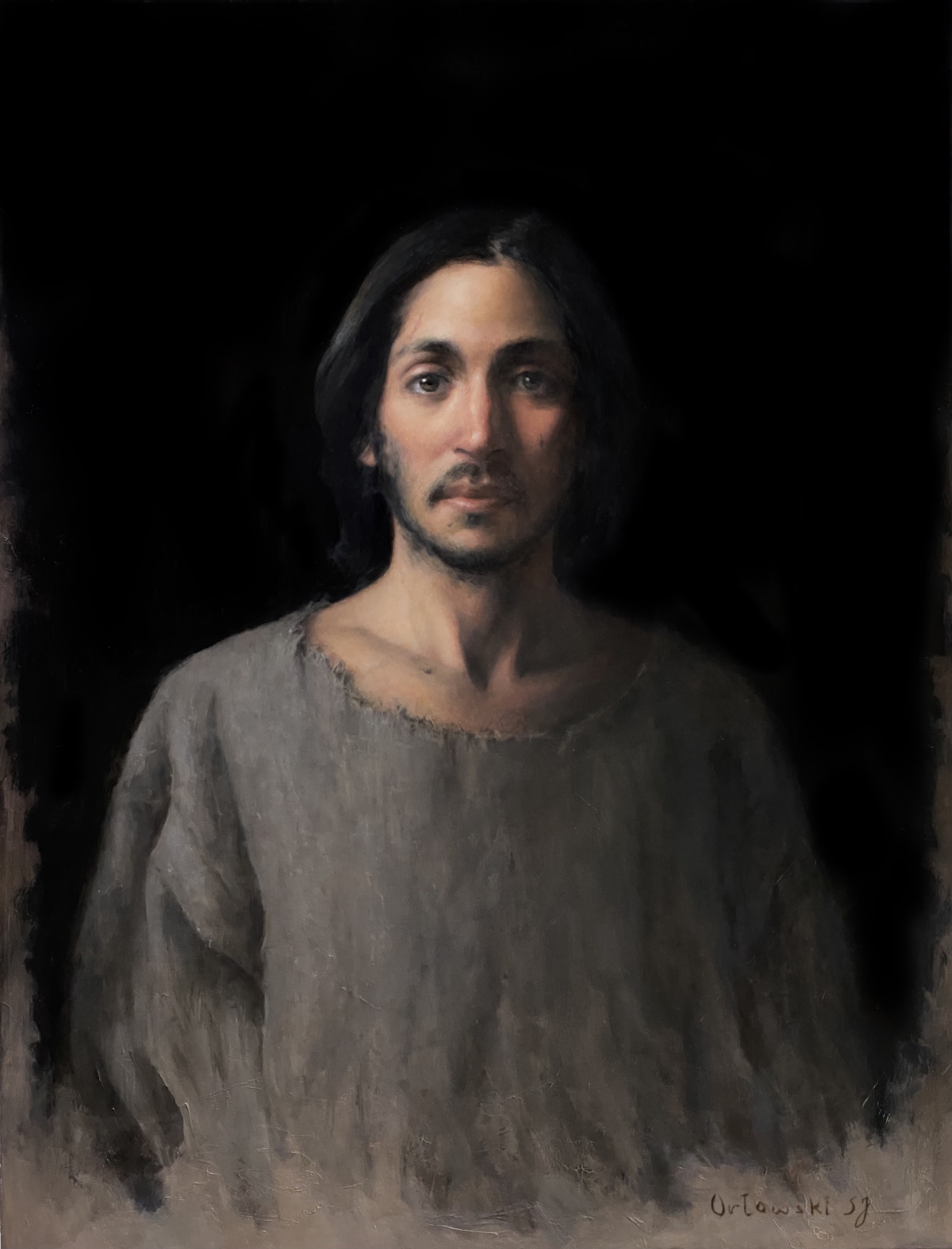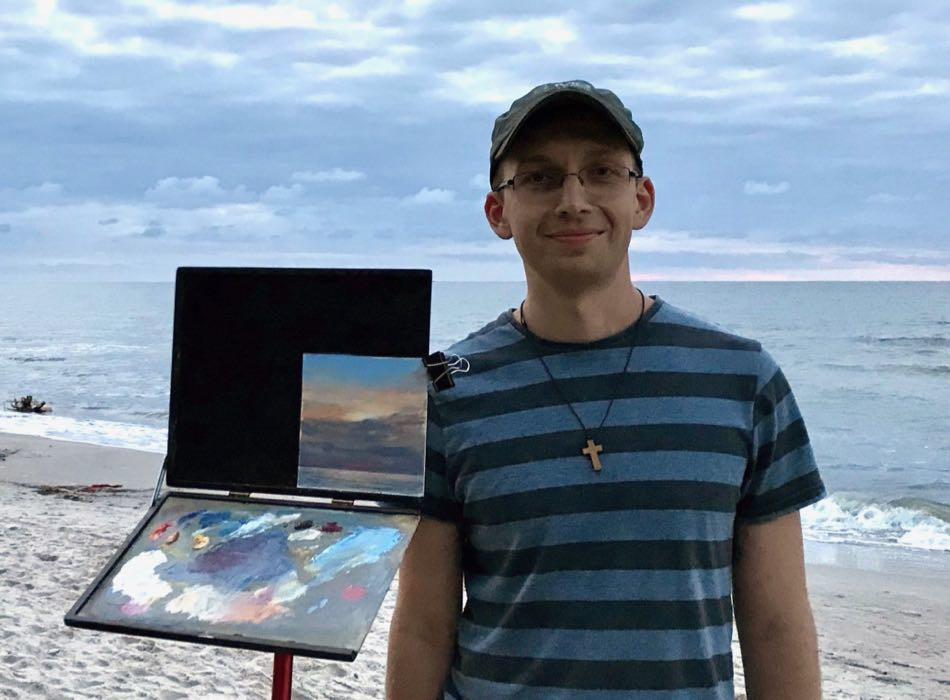 During this celebration of the Ignatian Year, St Ignatius of Loyola is portrayed in a myriad of ways, from the traditional–as seen in the great paintings, sculptures, and antique texts from Europe–to the more current, usually as illustration or even graphic design. A young Polish Jesuit, Fr Mateusz Orlowski, recently completed his own portrait of Ignatius. “The Conversion of Iñigo de Loyola” captures the visage of a young and handsome man full of life and energy, also vulnerable and starkly human.
During this celebration of the Ignatian Year, St Ignatius of Loyola is portrayed in a myriad of ways, from the traditional–as seen in the great paintings, sculptures, and antique texts from Europe–to the more current, usually as illustration or even graphic design. A young Polish Jesuit, Fr Mateusz Orlowski, recently completed his own portrait of Ignatius. “The Conversion of Iñigo de Loyola” captures the visage of a young and handsome man full of life and energy, also vulnerable and starkly human.

“There are many paintings of St Ignatius but most of them depict him in the late stages of his life, as a founder of the Society of Jesus. There are some paintings that show Ignatius right after his conversion when he was very young–but they usually use a similar way of painting his face, already quite old and bald,” shares Fr Orlowski. “When I started to think about portraying Ignatius I didn’t want to follow the same pattern…I wanted to show in this portrait that before the conversion, he was a courtier and a solider. One of the things that inspired me was the 2016 movie, “Ignacio de Loyola”, which showed Ignatius as a young, brave, and lively character.”
From the initial idea, it took him about three months to finish the painting. His creative process had two crucial steps: “First was to find the right composition and second was to figure out how to paint the face of Ignatius,” he says. “The first part took around a month. I did a few small drawings and paintings trying to find the best composition. Once I had found it I started to work on the face.” He decided on a very realistic style, wanting the image to be recognisable as St Ignatius. “I needed some reference images. Of course, we don’t have any photos, but what we have is his burial mask. I used it to get the basic likeness to the actual Ignatius,” he shares. “The rest of the face is my imagination and some other reference photos that helped with the neck, hair, and clothes.” Fr Orlowski discussed the results with his Jesuit brothers and friends. “Their feedback was very helpful to make necessary corrections and ensured that I was moving in the right direction.”
Fr Orlowski, who studied art in Poland, is now missioned to Taiwan where he has been learning Mandarin for under a year. “As my language skills improved I gradually started to do some pastoral work,” he says. “I have also recently started to give icon painting classes. Although I am quite experienced in this field, teaching icon painting in Taiwan is quite challenging–not only because of language but also because of different cultural contexts. In Poland, we grow up in a Christian culture and we are surrounded by Christian art. Here it is different.”
His desire to be a missionary stems from his novitiate days, at the very beginning of his formation as a Jesuit. “After reading the stories of St Francis Xavier and Matteo Ricci, and a more contemporary story of Fr Pedro Arrupe and his experience in Japan, I felt very inspired,” he says. “I found their lives really fascinating.” A few years later, he began to discern God’s call for him to go to Asia. “My superiors agreed to give me an opportunity to listen more carefully to this call,” he remembers. He studied language at The Beijing Centre for Chinese Studies, a Jesuit-run institution that promotes mutual understanding between China and other cultures. After finishing his studies in Poland, he came back to Asia “to continue this missionary experiment”.

“I think art is a great platform for ministry. It gives a great advantage of being able to reach a wide audience. Usually, in our ministries, we are limited to the so-called ‘Church Bubble’. It is very difficult to reach people outside this bubble,” says Fr Orlowski. “My graduation exhibition at the University of the Arts Poznań was on old Christian symbols and biblical motifs. Strictly speaking, there were no religious paintings but because my artwork was related to the Bible and Christianity, it naturally provoked some questions about faith and God. Showing these paintings to my colleagues and other people interested in figurative art gave me a kind of excuse to talk about spirituality and faith outside the church bubble.”
Fr Orlowski’s work, aside from the icon painting workshops where his goal is “to teach both spiritual and artistic aspects of Byzantine icons”, also includes religious paintings for chapels and for private use. “When I started painting I didn’t really have a favorite type of art or style. At some point, I discovered that naturally, I gravitate towards realism and figurative art,” he says. “Later, I understood that it is related to my approach to life in general. I want to promote a more affirmative approach to the world… I believe the whole creation is God’s gift. I think when we start to appreciate the beauty of the world around us, it’s harmony and design, we start to see ‘all things new in Christ’. We discover God’s love shining through all creation.”

